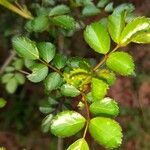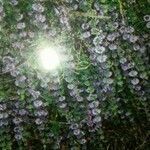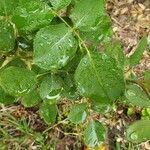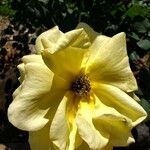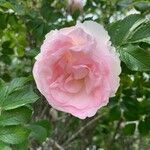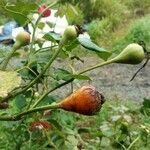Shrubs erect, 1–2 m tall. Branchlets purple-brown, terete, robust, subglabrous; prickles abundant to absent, curved, stout, flat. Leaves including petiole 5–11 cm; stipules mostly adnate to petiole, free parts auriculate, margin entire, often glandular-pubescent, apex acuminate; rachis and petiole sparsely prickly and glandular-pubescent; leaflets 3–5, rarely 7, greenish abaxially, dark green adaxially, broadly ovate or ovate-oblong, 2.5–6 × 1–3 cm, both surfaces subglabrous, adaxially often shiny, base subrounded or broadly cuneate, margin acutely serrate, apex long acuminate or acuminate. Flowers 4 or 5 and fasciculate, rarely solitary, slightly fragrant or not, 4–5 cm in diam.; pedicel 2.5–6 cm, subglabrous or glandular-pubescent; bracts 1–3, linear, glabrous, margin glandular or entire, apex acute. Hypanthium ovoid-globose or pyriform, glabrous. Sepals 5, deciduous, ovate, sometimes leaflike, abaxially glabrous, adaxially densely villous, margin entire or few pinnately lobed, rarely entire, apex caudate. Petals 5, semi-double or double, red, pink, white, or purple, obovate, base cuneate, apex emarginate. Styles free, exserted, nearly equaling stamens, pubescent. Hip red, ovoid or pyriform, 1–2 cm in diam., glabrous. Fl. Apr–Sep, fr. Jun–Nov. 2n = 21*, 28*.
More
A shrub. It can be a climber. It grows 6 m high and spreads 2.4 m wide. It keeps its leaves except in areas with very cold winters. Leaves have 3-5 leaflets. Flowers in wild plants are single and white or pink. The fruit are greenish-brown or red hips.
